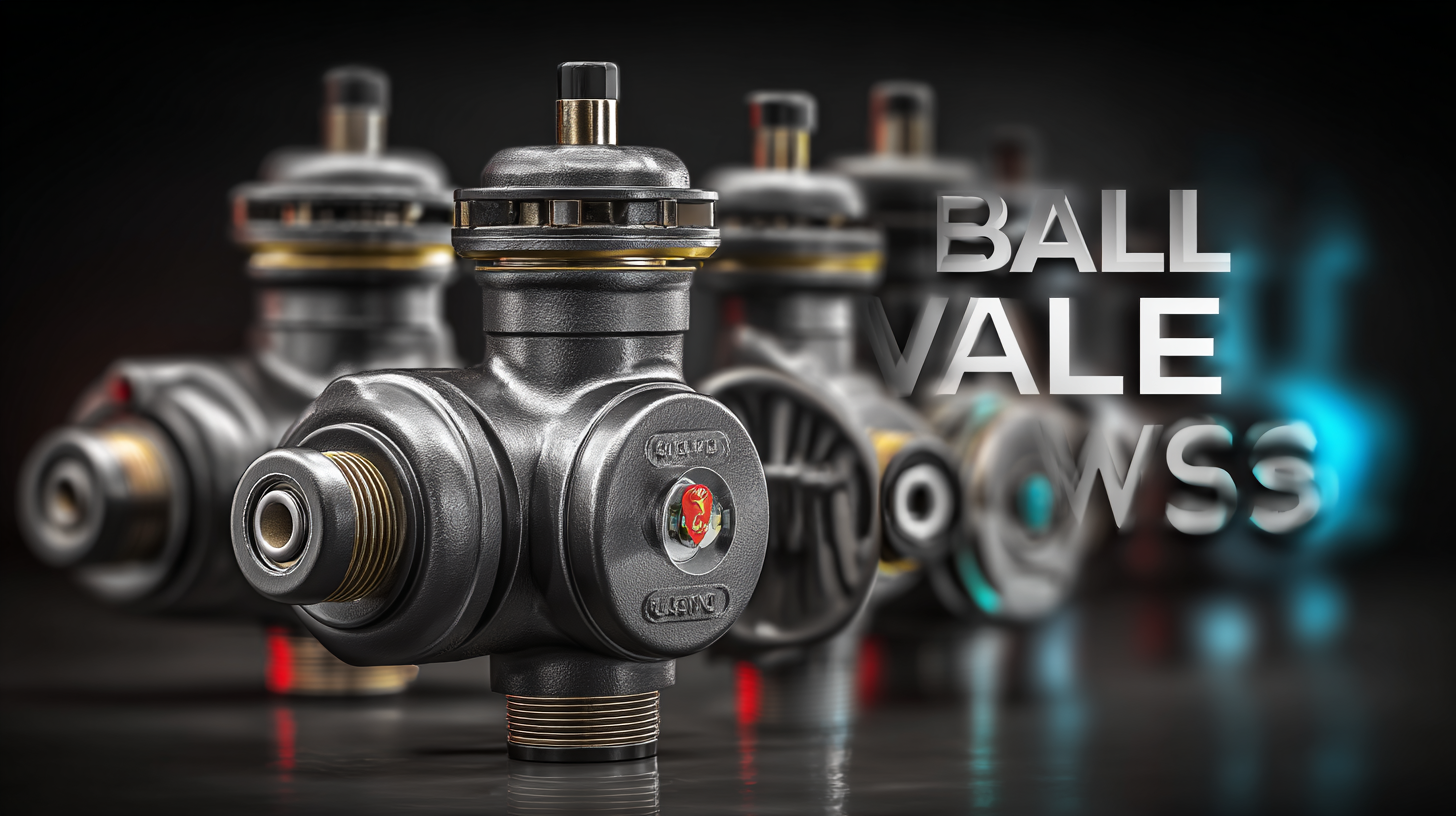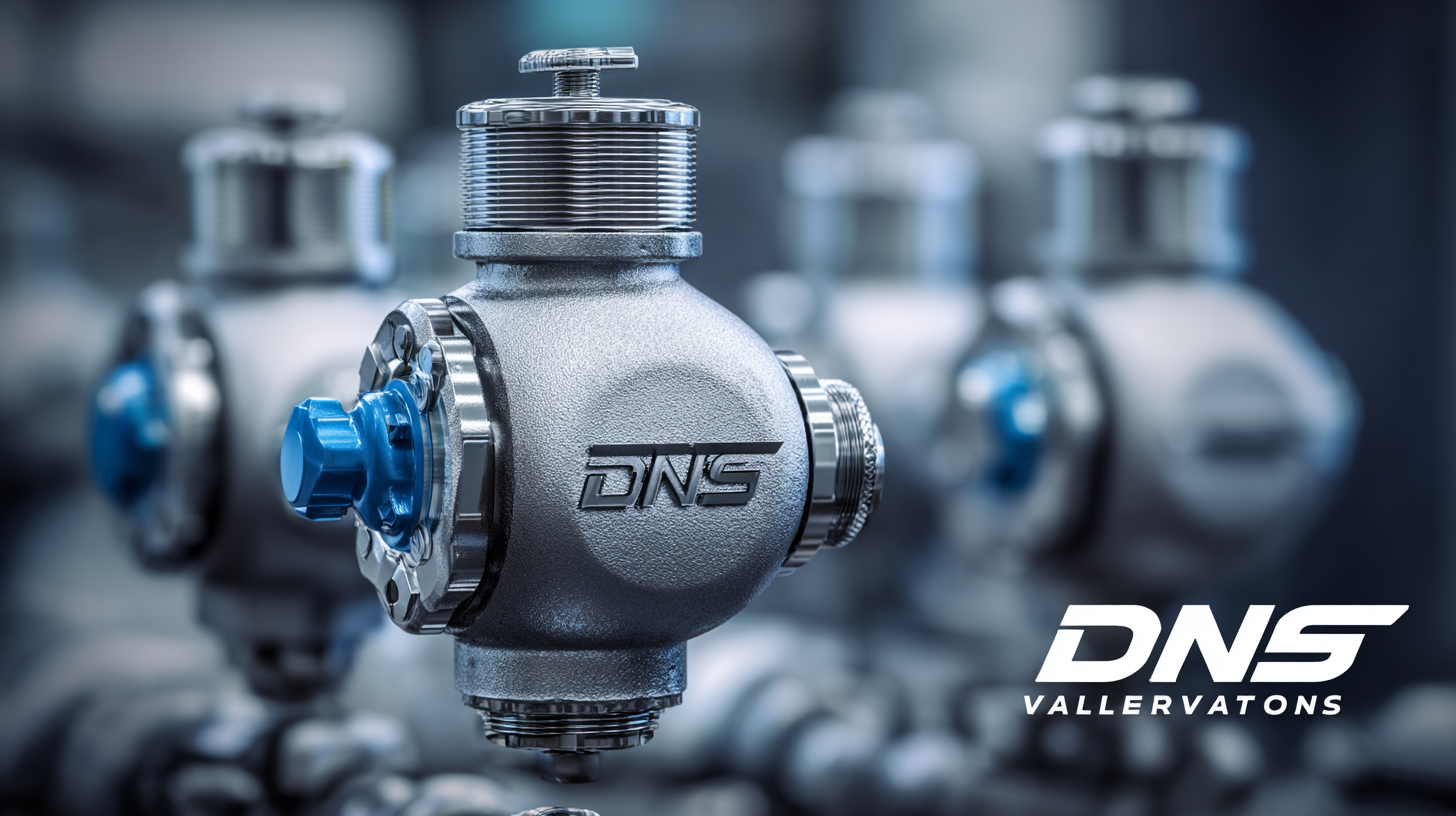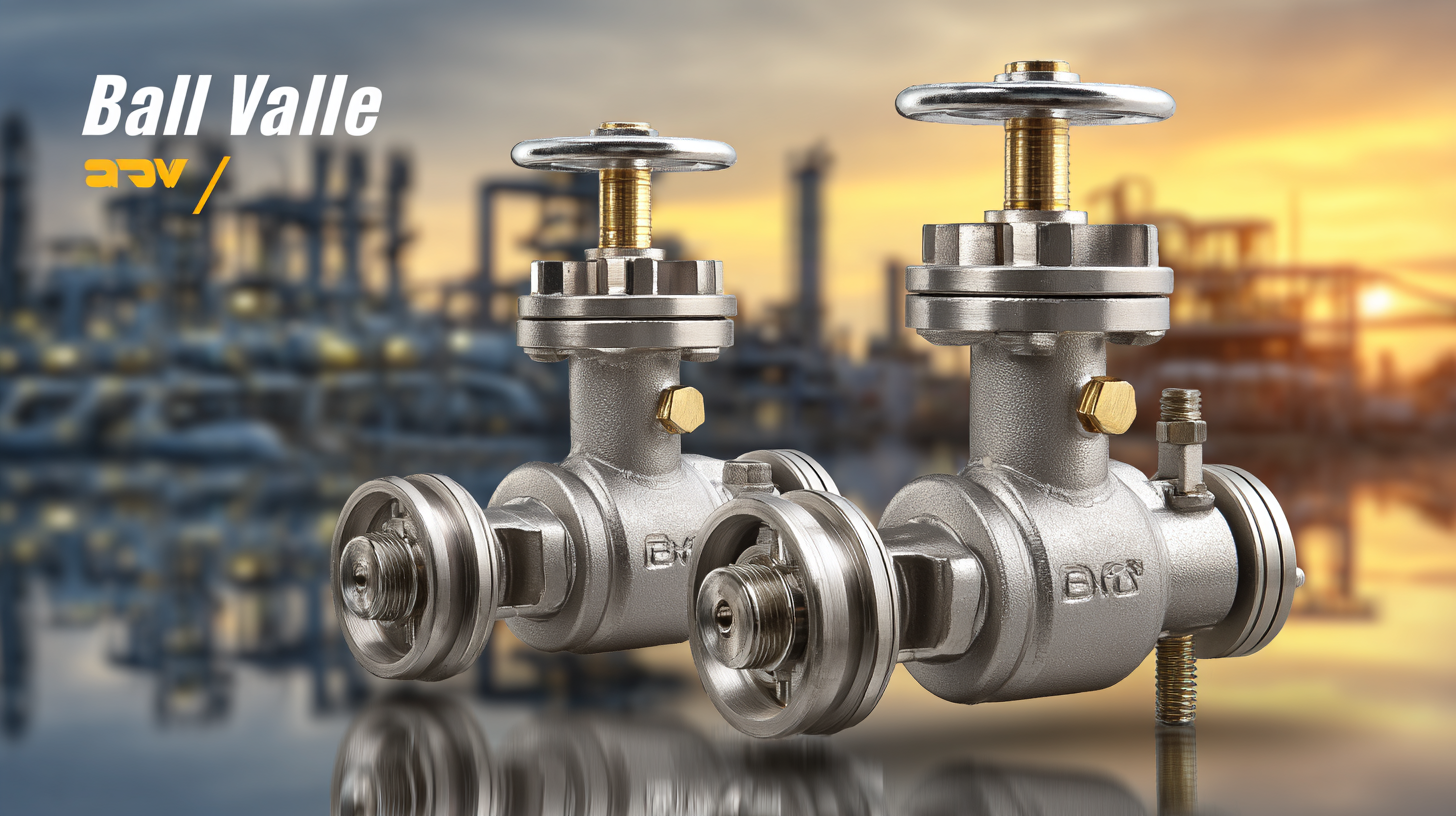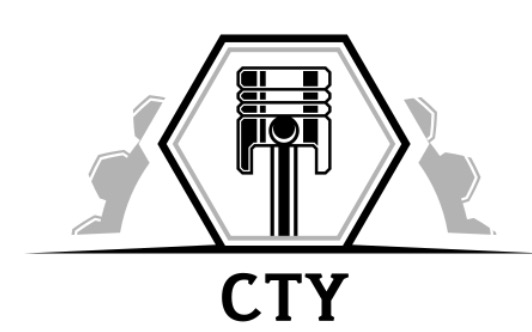- Home Page
- Company Profile
-
Our Products
- Hydraulic Pumps
- Hydraulic Solenoid Valves
- Conventional Valves
- Proportional Valves
- Safety Valves
- Mobile Control Valves
- Hydraulic Motor
- Cylinders and Servo Cylinders
- Hydraulic Filters
- Hoses and Fittings
- Gates Hydraulic Hose
- MP Filters Filters
- Dowty Gear Pumps
- Polyhydron Valves
- Manifold Blocks
- Walvoil
- Spica
- Hand Pumps
- ATOS Hydraulic Components
- Blog

How to Choose the Best Ball Valves for Your Industry in 2025 Trends and Insights
As industries evolve in 2025, the importance of selecting the right components for operational efficiency and reliability cannot be overstated. Among these critical components, ball valves play a pivotal role across various sectors, including oil and gas, water treatment, and chemical processing. According to a recent report by Industry Insights, the global ball valve market is projected to grow at a CAGR of 5.6%, reaching $8.5 billion by 2025. This surge is driven by advancements in manufacturing technologies and increasing investments in infrastructure development. As industries gear up to meet the demands of a rapidly changing market landscape, understanding the latest trends and making informed choices about ball valves will be essential. This blog will delve into the key factors and insights needed to effectively choose the best ball valves tailored to specific industry needs in 2025, ensuring optimal performance and compliance with evolving standards.

Key Trends Shaping Ball Valve Selection in 2025
As industries evolve, the selection of ball valves is increasingly influenced by key trends that shape operational efficiency and sustainability. One prominent trend in 2025 is the growing emphasis on eco-friendly materials and designs. Industry leaders are seeking materials that not only withstand high pressures and corrosive environments but are also recyclable and reduce overall environmental impact. The shift towards sustainable manufacturing practices is prompting manufacturers to innovate and provide solutions that align with corporate sustainability goals.
Another significant trend is the integration of smart technologies into ball valve systems. The rise of the Industrial Internet of Things (IIoT) is enabling real-time monitoring and data analytics, allowing for improved maintenance and operational responsiveness. Valves equipped with sensors can provide valuable insights into performance, helping companies preemptively address potential issues and optimize usage. This technology-driven approach is transforming traditional valve operations, making them more efficient and reliable in various industrial applications. As businesses evaluate their ball valve options in 2025, understanding these trends will be crucial for making informed and strategic choices.
How to Choose the Best Ball Valves for Your Industry in 2025 Trends and Insights
| Criteria | Details |
|---|---|
| Material Selection | Stainless steel, brass, PVC based on medium compatibility |
| Size and Specifications | Diameter ranges from 1/2" to 12", based on flow requirements |
| Pressure Rating | Class ratings from 150 to 2500 psi depending on application |
| End Connections | Threaded, flanged, or welded according to installation requirements |
| Actuation Type | Manual, electric, or pneumatic actuators for various control needs |
| Industry Standards | Compliance with API, ANSI, and ISO standards for reliability |
| Temperature Range | Operating temperatures from -20°C to 200°C for various applications |
| Maintenance Considerations | Ease of maintenance, availability of spare parts |
Identifying Specific Industry Needs for Ball Valves
When selecting ball valves for your specific industry in 2025, understanding the unique needs of your sector is crucial. Different industries have varied requirements based on their operational conditions, regulatory standards, and fluid characteristics. For example, the oil and gas sector demands valves that can withstand high pressures and corrosive substances, while the food and beverage industry prioritizes sanitary designs to prevent contamination. Engaging with industry experts and conducting a thorough analysis of these requirements will guide your selection process.

In addition, technological advancements are rapidly influencing valve design and functionality. Industries are increasingly leaning towards smart valves equipped with IoT technology for enhanced monitoring and control. Such innovations cater to the growing emphasis on process efficiency and safety. Therefore, understanding these emerging trends, along with your specific operational needs, will ensure you choose the best ball valves that not only comply with industry standards but also enhance your operational efficacy for the future.
Quality Assurance in Chinese Manufacturing of Ball Valves
In the rapidly evolving landscape of industrial components,
quality assurance
in the Chinese manufacturing of ball valves has become increasingly critical.
According to a recent report by the International Organization for Standardization (ISO),
over 70% of industrial companies cite quality as a primary factor influencing their purchasing decisions.
This trend underscores the necessity for manufacturers to adhere to stringent quality control protocols to meet international standards,
thereby enhancing the reliability of their products in demanding applications.
The ball valve market is projected to reach a value of
$11.5 billion by 2025,
with a substantial portion attributed to innovations in quality assurance practices.
A study by the China Chamber of Commerce for Import and Export of Machinery and Electronic Products highlighted that
companies employing advanced quality management systems reduce defect rates by more than
30%.
This significant improvement not only boosts the competitiveness of Chinese manufacturers but also ensures that their ball valves meet the robust requirements of industries such as
oil and gas,
chemical processing, and
water treatment.
As companies focus on quality assurance, it is essential for buyers to consider these manufacturing standards when selecting the best ball valves for their specific needs.
Global Export Standards for Ball Valves: What to Know
When selecting ball valves for your industry, one vital aspect to consider is the compliance with global export standards. According to a recent report by the International Association of Plumbing and Mechanical Officials (IAPMO), the demand for compliant ball valves is projected to grow by 10% annually through 2025. This surge is driven by the increasing regulations imposed by trade organizations worldwide, ensuring safety and environmental sustainability in valve manufacturing.
**Tips for Compliance:** Always look for certifications such as ISO 9001 and API 608, which are indicative of quality and adherence to international standards. Additionally, ensure that suppliers can provide documentation regarding the materials used, as the European Union's REACH and RoHS regulations significantly impact global supply chains.
As industries evolve, understanding compliance requirements can be complex. A notable trend is the shift towards more eco-friendly materials, with 45% of manufacturers surveyed in 2023 indicating an intention to transition to sustainable options. It's crucial to stay updated on these developments to maintain competitiveness in the global market.
**Tips for Staying Informed:** Subscribe to industry newsletters and attend trade shows to gain insights into the latest material innovations and regulatory changes. Engaging with industry experts can also provide valuable knowledge on how to navigate compliance challenges effectively.
Ball Valve Demand Trends by Industry in 2025
This chart illustrates the projected demand for ball valves across various industries in 2025, highlighting key sectors such as Oil & Gas, Water Supply, Chemical Processing, and HVAC. The data reflects the growing need for reliable and efficient flow control solutions in these industries.
Sustainability and Innovation in Ball Valve Design for 2025
In 2025, sustainability and innovation will take center stage in the design of ball valves, reshaping their applications across various industries. With the global valves and manifolds market projected to expand from USD 20.1 billion in 2024 to USD 30.5 billion by 2033, companies are investing heavily in environmentally-friendly designs that promote efficient operations while minimizing waste. Innovations are expected to focus on materials that are both durable and recyclable, ensuring compliance with emerging sustainability standards.

As industries prioritize wastewater management, the importance of robust valve solutions becomes paramount. The valves in the water and wastewater market are anticipated to grow at a CAGR of 3.18%, reaching USD 35.0 billion by 2035. Selecting the right ball valve that meets these demands will not only improve efficiency but also contribute to overall sustainability efforts.
Tips: When choosing ball valves, consider their material composition and design for longevity and recyclability. Additionally, prioritize products that provide enhanced automation features to optimize performance in fluid control applications. Keep an eye on emerging technologies and innovations that align with sustainability goals to future-proof your operations.
Developed and Managed byInfocom Network Private Limited.

 Send Inquiry
Send Inquiry
